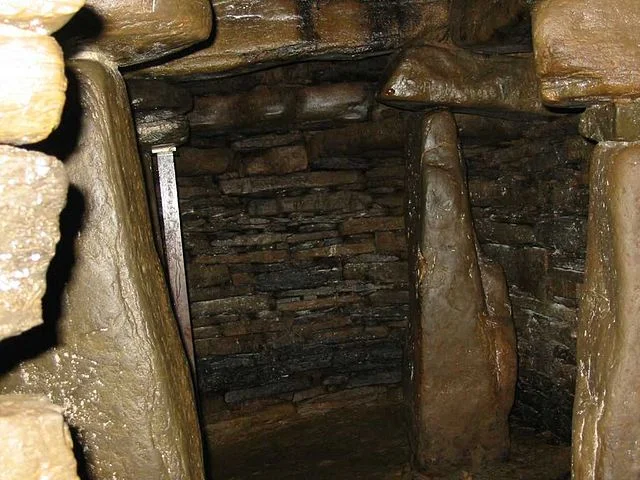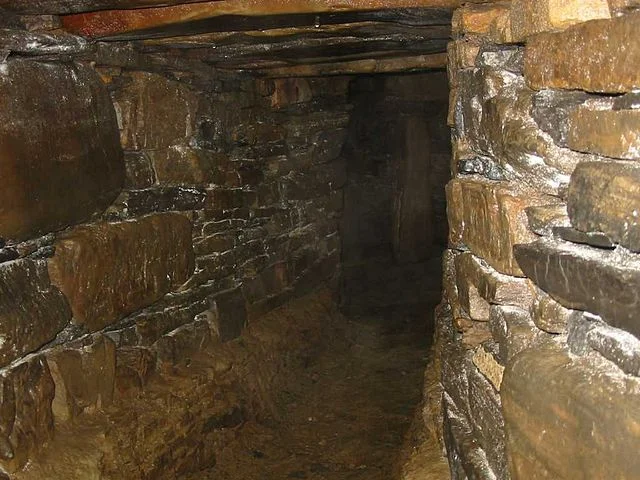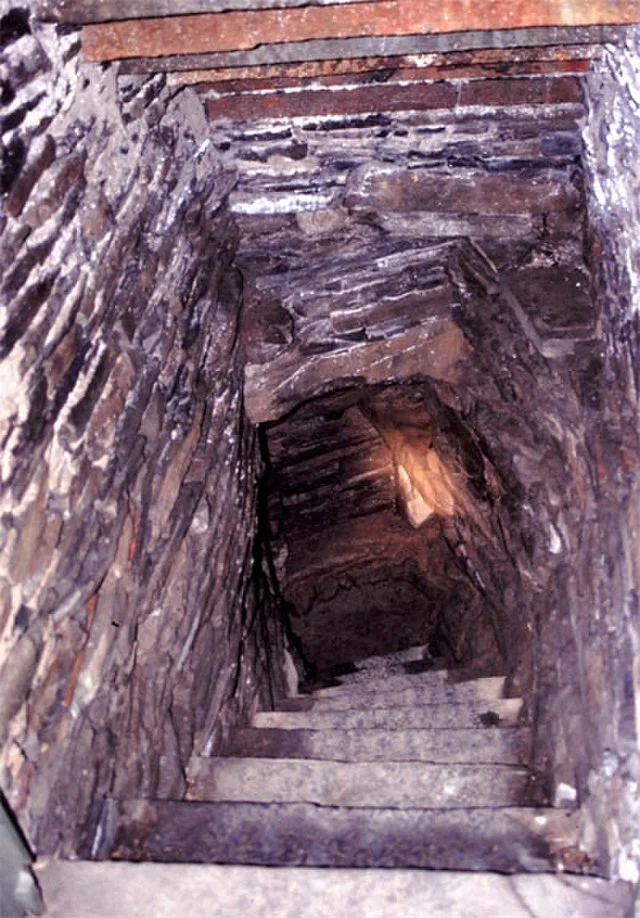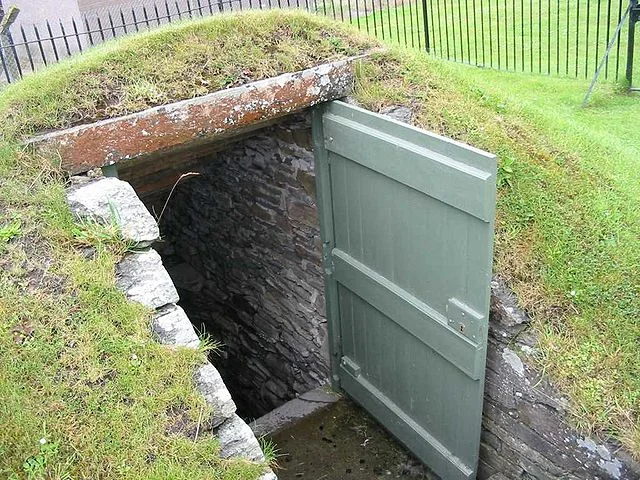The Grain Earth House is an underground structure located in Angus, Scotland. It dates back to the Iron Age, around 200 AD. Discovered in 1963, the house represents a souterrain, or earth house, a type of subterranean structure commonly used during this period in Scotland and northern Europe. These structures were often used for storage and possibly defense.
Get your dose of History via Email
Structure and Purpose

The Grain Earth House is an underground passage with stone-lined walls. It measures about 11 meters long and is approximately 1.5 meters wide. The walls consist of carefully placed stone slabs, a typical feature of Iron Age souterrains. The roof, which originally would have been constructed from stone lintels or wood, has been restored with modern materials.
The exact purpose of souterrains like the Grain Earth House remains debated among historians and archaeologists. They were likely used to store food, especially grains, due to their ability to maintain cool temperatures. This would have been crucial for preserving crops during the harsh winters. Additionally, some researchers suggest that souterrains may have served as hideouts during attacks, though there is little direct evidence for this theory.
Discovery and Excavation

The site was discovered in 1963 by accident during routine agricultural work. Subsequent excavations revealed the extent of the underground passage and its unique construction. The work was led by archaeologists from the Ministry of Works. They documented the site and identified artifacts, including pottery shards and animal bones, which provided further insight into the people who once used the Grain Earth House.
Iron Age Context

The Grain Earth House is part of a broader network of souterrains that appeared during the Iron Age in Scotland. This period, around 800 BC to 400 AD, saw the development of advanced agricultural practices and defensive structures. The Grain Earth House reflects the ingenuity of Iron Age societies in creating practical storage solutions for food supplies, which were vital for survival in Scotland’s cold climate.
Conclusion
The Grain Earth House offers valuable insight into the everyday lives of Iron Age communities in Scotland. Its construction and design provide clues about how these societies stored their food and possibly protected themselves from external threats. The discovery of artifacts, along with the house’s well-preserved structure, makes it an essential site for understanding the Iron Age in northern Europe. The Grain Earth House remains a significant archaeological site for those studying ancient Scottish history and architecture.
Source:

